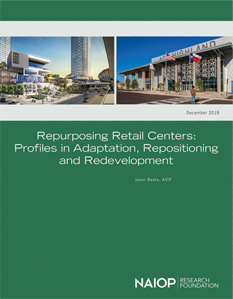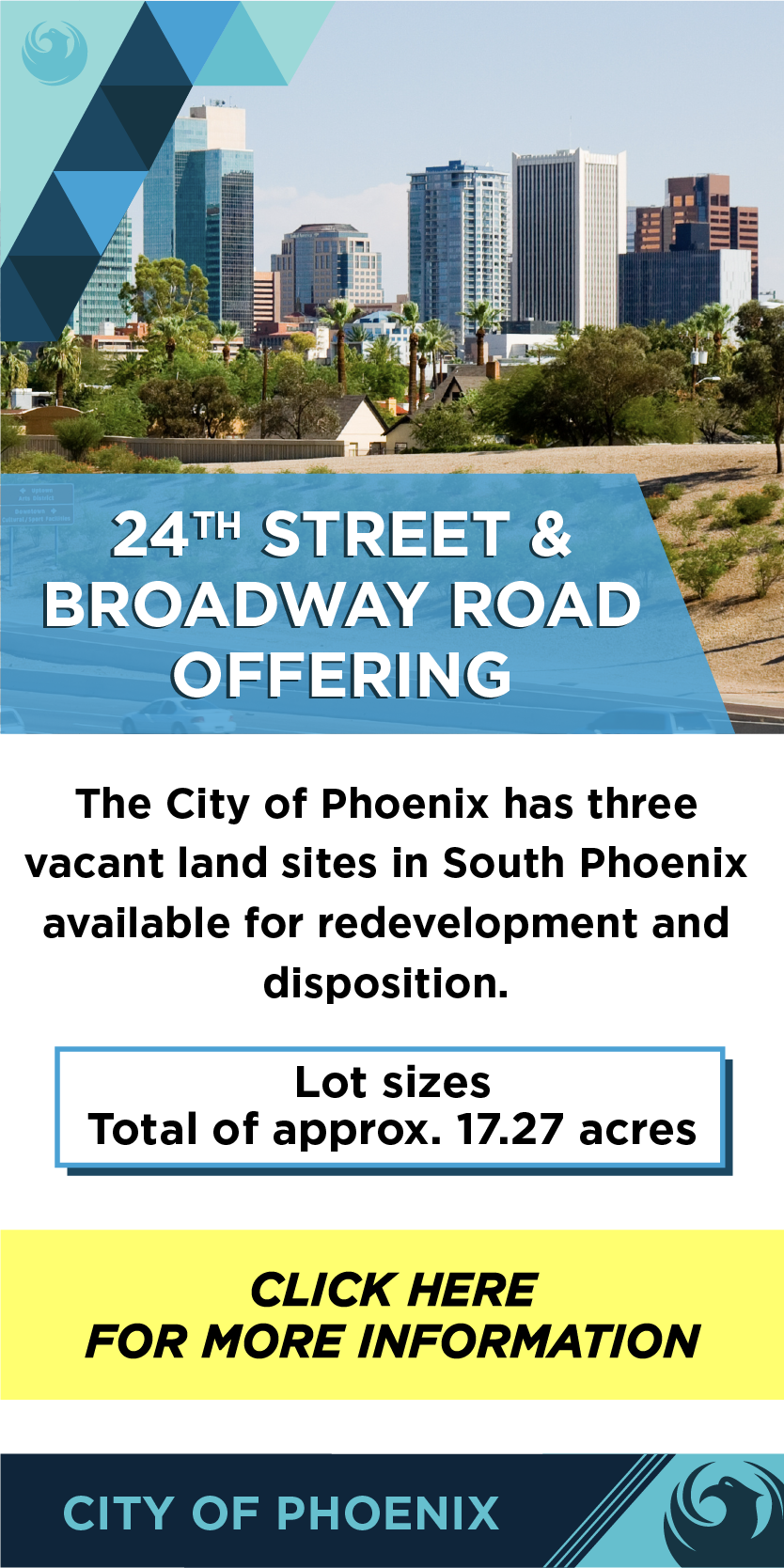Not Your Father's Mall Anymore

Developers are unlocking the value of old retail centers by adding new uses, from charter schools to distribution centers.
A generation ago, traditional malls thrived by offering shoppers a range of retail options in a single location. Both smaller retailers and large department stores benefited from their ability to generate foot traffic. However, growing competition from more convenient or less expensive e-commerce and discount retailers has led to the closure of hundreds of shopping malls across North America in recent decades.
While many of the remaining properties may no longer support a traditional mall, they are often strong candidates for redevelopment. The NAIOP Research Foundation has published a new report titled “Repurposing Retail Centers: Profiles in Adaptation, Repositioning and Redevelopment,” by Jason Beske, AICP. Through five case studies, the report examines how developers in the U.S. and Canada are stepping in to transform struggling or closed shopping centers into properties that are adapted to current market conditions and serve the needs of their surrounding communities.
Finding Value in Old Shopping Centers
If a mall has closed or experienced high vacancy rates for a prolonged period, it likely means that the local market will no longer support a center that is exclusively devoted to retail. But shopping centers — particularly large, traditional malls — often possess characteristics that make them attractive for other uses. Mall properties are often located near freeways and public transit, making them viable candidates for office, industrial or multifamily uses. Many malls are also surrounded by large parking lots that allow room for additional construction. Some shopping centers include outparcels that can provide developers with additional redevelopment opportunities or a source of lease income during a project. These attributes can make a mall attractive to developers interested in either completely redeveloping the property or supplementing retail with new uses.
Mall properties can also be attractive candidates for uses that require a large footprint. For example, Austin Community College (ACC) found the Highland Mall’s layout to be ideal for its purposes: retail shops have been transformed into classrooms and study areas that are linked together by the building’s central corridor. RedLeaf Properties, ACC’s partner in the redevelopment of the mall, was able to transform large portions of the mall’s parking field into retail, residential and office buildings, creating a mixed-use community anchored by the college.
Partnering with Communities
While malls can present unique redevelopment opportunities, developers also need to be aware of their economic and social importance to surrounding communities. As the report’s case profiles demonstrate, local communities are often eager to work with a developer to repurpose a failing mall. However, the developers profiled in the report also recognized the importance of working closely with communities to ensure that redeveloped properties meet local needs.
The projects profiled in the report have created new jobs, and several have brought additional benefits to local communities, such as attractive public spaces and new services. Developers planning a mixed-use project can benefit from public outreach and consultation when designing amenities that are accessible to both tenants and the public. Both Highland and Amazing Brentwood near Vancouver, British Columbia, include publicly accessible amenities such as parks, trails and plazas that create a sense of place, benefit the local community and increase foot traffic for retail tenants.
Redevelopment can also bring important services to a community, such as when ATR Corinth Partners redeveloped a portion of the 100 Oaks Mall in Nashville to host the Vanderbilt Medical Center, or when the Movement Foundation transformed portions of a shopping center in Charlotte into a charter school and affordable housing. The new ACC Highland campus has also significantly expanded the community college’s ability to serve the surrounding community in Austin.
Working closely with community leaders is also critical to successful project completion. Redeveloping a shopping center often requires modifying a property’s original zoning and adjusting connections to public infrastructure. For example, Industrial Commercial Property (ICP) had consulted with officials in North Randall, Ohio, for years prior to acquiring the Randall Park Mall and its rezoning for industrial uses. Continued close collaboration with local leaders helped ICP convince Amazon to locate a distribution center on the site. Transforming a shopping center’s parking lots with new construction and traffic patterns often requires adjusting connections to public roadways, which can benefit from public investments such as new traffic lights or access roads. In ICP’s case, the state of Ohio made improvements to a nearby highway ramp to accommodate a new traffic flow pattern.
The continued expansion of e-commerce and discount retail suggests that the recent trend of widespread mall closures is not yet over. However, the projects profiled in this report demonstrate that many of these properties can be successfully repurposed to meet current market demand and benefit local communities.
Shawn Moura, Ph.D., is the director of research for NAIOP.
Get the ReportView and download “Repurposing Retail Centers: Profiles in Adaptation, Repositioning and Redevelopment.” |





